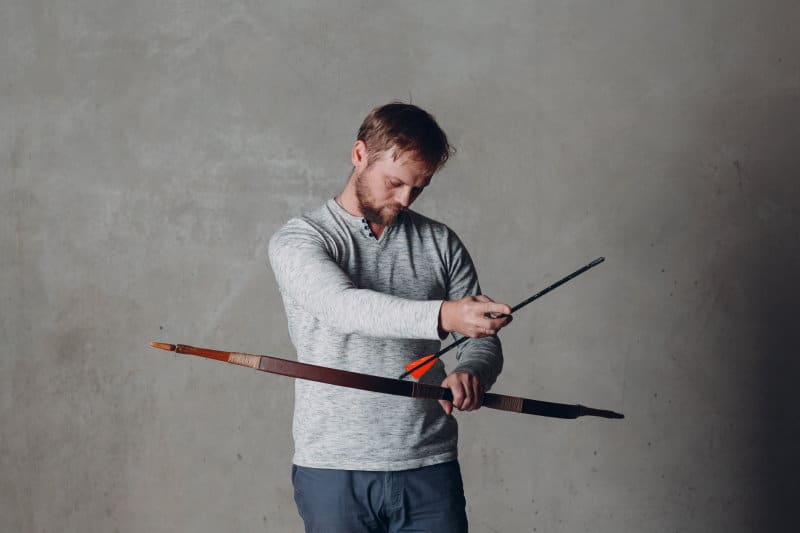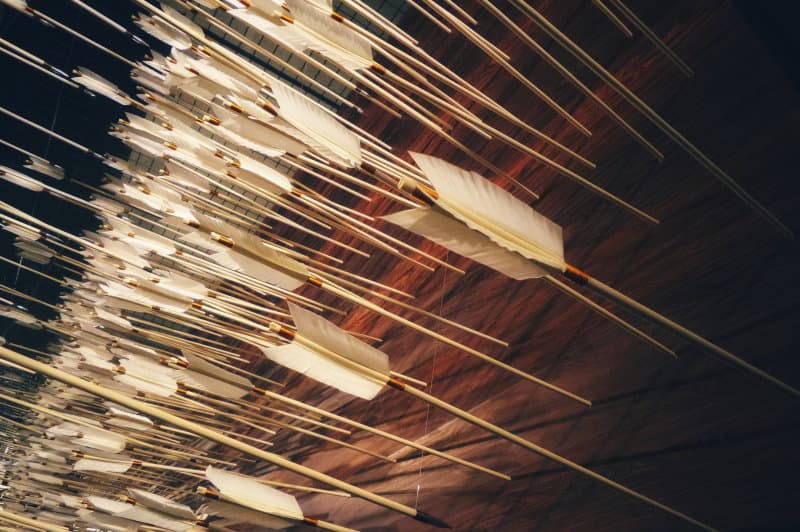Looking at professional archers shooting their arrows, you barely get a glance of the arrow in flight. They zoom by so fast, it’s in the archer’s hand for a second, the next millisecond, it’s already at the target.
It makes you think, how fast does an arrow travel?
There’s a plethora of types of archery equipment that can affect an arrow’s speed. From the bow’s type to the draw length, several factors can influence how fast an arrow travels. A detail as small as the humidity level can alter an arrow’s trajectory.
Whether you’re a pro archer or bowhunting enthusiast, stick around to get a closer look at how fast an arrow travels.
What Makes an Arrow Fly Faster?
Could it be how strong you are? Or the skillset you have? One thing’s for sure, with the right archery equipment you can easily make your arrow travel faster.
While equipment matters, there are other factors you can consider. Let’s dive deep into each one below.
1. Bow’s Draw Weight
Whenever you use a bow and drag the string back, do you feel that weight you pull back with you? That’s the bow’s draw weight. It calculates the amount of energy you’ll need to pull back.
That way, it can draw a good conclusion as to how much energy will push the arrow, meaning, how fast it’ll go.
If you think about it, the heavier the draw weight, the more energy you’ll use, subsequently, the faster your arrow will travel. The measuring unit in this case is in pounds.
For example, if we look at a recurve bow, that’s around 35 lbs., the draw weight should be 35 lbs. with a draw length of 28 inches. The less length you pull, the less draw weight you’ll get, which means, the slower your arrow will be.
2. Draw Length

This might be the first factor you thought about. It could easily make or break your target feet-per-speed (fps).
This factor is so crucial, that one inch lost in draw length can drastically affect your arrow speed by 8 to 12 fps.
As a child, I remember messing around with your average slingshot toy. The farther I pulled back, the faster and more distant my ball went.
Now, take this instance and apply it to your bow’s draw length. You need to get as much length between your string and riser to get better results. We recommend strengthening your upper body muscles to get the best draw length you can achieve.
3. Arrow Material
In addition to the draw length and weight, you should also focus on your arrow’s material if you want it to go faster.
You can think of it this way, you and your friends have probably made some paper airplanes at school. The faster ones are usually the ones with better wing designs and lighter paper.
It’s almost similar in an arrow’s case. If you want to get the best speed out of an arrow, you should be looking for ones with lighter material and a higher-quality aerodynamic design.
Let’s take a look at some of the options out there.
Types of Arrows
- Aluminum Arrows: These arrows are the lightest of the bunch, probably because they’re hollow. We’d recommend these if you have a light draw weight on your bow.
- Carbon Arrows: You can customize your fletching details in a carbon arrow to increase your chances are better speed. Nevertheless, this option can be light and durable enough to get higher fps.
- Fiberglass Arrows: If you’re looking for speed, we’d say look no further. Fiberglass arrows are usually heavy. Since they have an exceptionally straight arrow spine, you could use them for more accurate target shootings.
- Wood Arrows: Going back to basics, wooden arrows are meant for those who value tradition. Other than that, speed-wise, you won’t be getting the best since wood can easily warp and affect the arrow’s trajectory.
4. Weather Conditions
Unless you have weather-controlling superpowers, this factor is out of your hands. A windy day can hinder your arrow’s speed.
Rain, storms, and snow can all affect your arrow’s path. Weather conditions can also affect your performance. We’re sure you’d prefer a clear sunny day to practice shooting, rather than a dark and dreary one.
5. Bowstring Material

Yes, even the bowstring you shoot with can affect an arrow’s speed. To get a swifter throw, you’d want to look for a stretchy bowstring.
Aside from its malleability, you’d also want to look out for its weight. The lighter it is, the easier it is to increase your draw length and get a turbo let-off.
The best material for bowstrings is Dyneema, which is essentially a polyethylene mix. It’ll ensure both stretchiness ability and being lightweight.
6. Type of Bow Used
The kind of bow you use can play a major role when it comes to your arrow’s speed. There are a few bow types in the market, but which will give the best thrust?
You can’t go wrong with a compound bow. This modern bow works through a network of cables, cams, and mods, all designed to give you optimal speed, distance, and precision. A compound bow can go up to 300 fps.
Meanwhile, the next best thing could be a recurve bow. Even though its design is much simpler, you can add several features such as stabilizers to give you better results. A recurve bow could travel approximately 225 fps.
How Fast Can an Arrow Fall?
Suppose you shot an arrow upwards. While we don’t necessarily recommend doing it, it’s normal to be curious. That being said, the question remains, how fast would it fall?
Well, it depends on several factors. Similar to how fast an arrow would travel horizontally, you need to take into account the draw length, weight, arrow material, weather condition, and so on.
Having said that, this arrow would be traveling downwards. The most crucial factor here could be the amount of air resistance the arrow would face.
On the other hand, if you shoot an arrow horizontally, it isn’t going in a perfectly straight line. There’s an initial kick upwards that eventually falls down.
Picture this, you shoot an arrow and measure how much time it takes to hit the target. In this case, let’s say it took 0.2 seconds. It would drop approximately 75 inches for every second.
What is the Fastest Arrow Ever Shot?
This record belongs to Arjun Ajay Singh. He, not only shot one, but 10 arrows to achieve this mind-blowing record.
Singh shot 10 arrows in around 48 seconds. That means each arrow took around 0.2 seconds to be shot.
Conclusion
How fast does an arrow travel? Well, you certainly don’t need to be Lara Croft to get a speedy shot. You mainly need to consider the details.
A faster shot would be a lighter arrow, elastic bowstring, larger draw weight, longer draw length, and a sturdier bow (compound, preferably). It also wouldn’t hurt to get your shots in good weather.
Once you’ve got that covered, who knows? Maybe you can be the next record-breaker.
If you’re interested in knowing more about the physics aspect of an arrow’s flight, check out our article, “Do Arrows Spin in Flight? The Physics of Archery”

